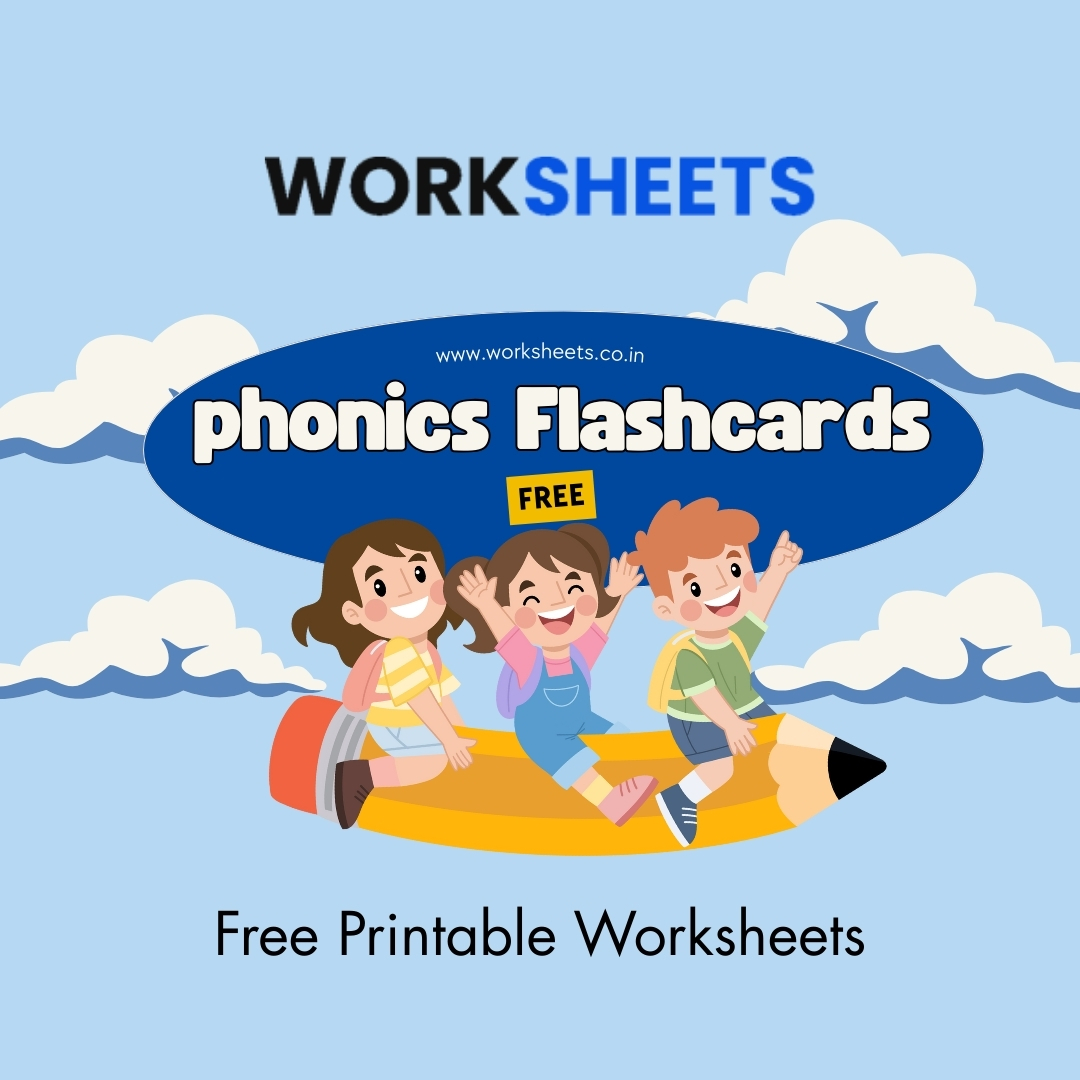Objectives of Phonics Flashcards For Kids:
- Help children recognize and name the letters of the alphabet.
- Teach the correct formation and strokes used in writing each letter.
- Strengthen letter-sound associations to support early reading skills.
- Develop fine motor skills through letter tracing and writing practice.
- Reinforce phonemic awareness by connecting letters to common sounds.
- Encourage active participation by asking children to trace letters with their fingers—on paper or even on a TV screen.
- Support visual learning through colorful, engaging flashcards that make phonics fun and memorable.
Boost your child’s reading skills with our free printable worksheets for phonics flashcards! Designed for preschool, kindergarten, and early grade learners, these engaging flashcards help kids master letter sounds, CVC words, blends, and digraphs. Perfect for parents, teachers, and homeschoolers to make early literacy fun and effective. Download now and support foundational reading development with high-quality phonics resources.
Looking for More Worksheets than just the Phonics Flashcards For Kids?
Don’t stop at phonics! Explore our full collection of engaging worksheets:
- Maths Worksheets – Make numbers fun with activities for every grade.
- Science Worksheets – Spark curiosity with hands-on science learning.
- Arts & Crafts Worksheets – Let creativity flow with easy, printable art activities.
- English Grammar & Reading Worksheets – Build strong literacy skills beyond phonics.
Browse All Worksheets Here or check out a category your child will love!
Frequently Asked Questions For Phonics Flashcards For Kids
What is phonics and why is it important?
Phonics is a method of teaching children how to read and write by connecting sounds (phonemes) with letters or groups of letters (graphemes). It helps children decode new words, build vocabulary, and become confident readers.
When should kids start learning phonics?
Most children begin learning phonics between the ages of 3 to 5, typically in preschool or kindergarten. However, exposure to letter sounds can start even earlier through playful activities like singing alphabet songs or using flashcards.
What comes after phonics in reading development?
After phonics, children usually focus on:
Sight words – Recognizing common words without sounding them out.
Reading fluency – Reading smoothly and accurately.
Reading comprehension – Understanding and interpreting text.
Vocabulary building – Learning the meaning of new words in context.
How can I help my child practice phonics at home?
You can support phonics learning by:
Using flashcards and printable worksheets.
Playing phonics games and rhyming songs.
Reading simple books aloud together.
Encouraging letter tracing and writing practice.
How long does it take to learn phonics?
The duration varies for each child, but with consistent practice, most kids gain a strong grasp of basic phonics within 1–2 years. Mastery comes with continued exposure through reading and writing activities.
What should my child learn after mastering Phonics Flashcards For Kids?
Once your child is confident with phonics, the next steps include:
Reading simple sentences and storybooks.
Expanding vocabulary and sentence structure.
Working on grammar, punctuation, and spelling rules.
Exploring subjects like Math, Science, and Art with age-appropriate worksheets.
